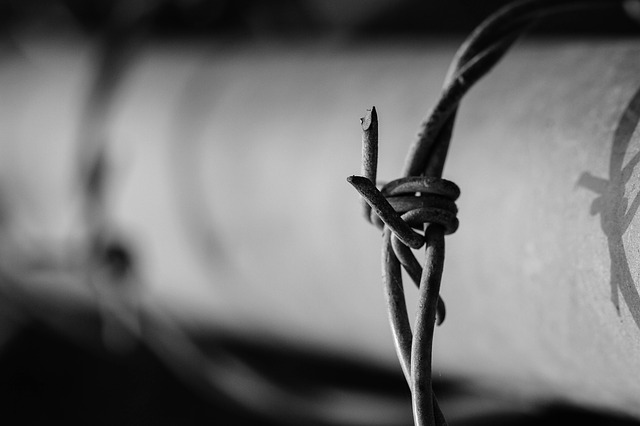October 1, 2018
Review of The Heart Goes Last
The Heart Goes Last, by Margaret Atwood, is a quasi-science-fiction story set in the modern United States. Technically, it could be in the near future, but there is nothing to suggest it isn’t set in the present time.
The setup is (post-)apocalyptic alright, but in an individual way. Jobs disappear, social cohesion collapses, people live in the streets. However, the focus is on Stan and Charmaine, who are unwilling to live in their car anymore, and so sign up for Positron. It is a place promising security, safety, bliss; ad infinitum. That is the catch, however. Just like Hotel California, you can check out in any time you want, but you can never leave.
Let me start by saying this: I like Margaret Atwood’s style.Check the Critical Reception section in the article about The Other Side of Dreams to get a hintI like the way she introduces a deeply introspective narrative style, giving her characters life. As a result, I really had high hopes about The Heart Goes Last. Disappointingly, my expectations were shattered.
I have read countless books, both as a casual reader and from the perspective of literary criticism. Honestly, I never remember a narrative disintegrating so completely. Let’s see the details.

Genre, Plot, and Narrative
As I mentioned already, The Heart Goes Last is balancing somewhere between science fiction and something else. Balancing isn’t always good news, though writers of Margaret Atwood’s caliber have the experience – you’d expect – to make something great out of this ambiguity. What is this “something else” though? Well, problems begin there, because what Atwood tries to express with her novel doesn’t quite resolve into focus.
Is it a book about societal upheaval? Perhaps a cautionary tale about modern socioeconomics? Or maybe it’s an old-fashioned metaphor pertaining to the conflict between two ideological opposites – I kept thinking of the ridiculous character of Ed as a caricature of Stalin, for some reason. Perhaps, conversely, it’s much more narrowly focused. Perhaps it’s a story about personal struggles, trying to overcome desire in favor of stability, or stability in favor of freedom.
These and other similar readings are all valid, to an extent. The problem is, the author doesn’t seem quite certain what to do with any of them. Up until the first third, perhaps a bit after, there is an equal claim by all of them. Deep down, the reader entertains the hope that it will all fuse together in a grand narrative whole; a sense-making masterpiece, which will just click into place.
From Sex with Teddy Bears to Gay (sort of) Elvises
Sadly, the exact opposite is the case. The narrative disintegrates, rapidly, like a broken “possibilibot” (the euphemistic term used in the novel for sex robots), spurting incongruous parts here and there. As if the author became aware of this, there are quite a few ad-hoc plot points that struggle to keep the whole thing from falling apart. Unfortunately, it doesn’t work. The attempt simply brings the opposite result of making the entire novel come across as even more incongruous and, frankly, ridiculous.
The plot becomes increasingly more naive and childish. It eventually reaches absurd proportions in the final third. There is a grotesque quality about the second half of the novel, though not in its more interesting, menacing aspect. Rather, it disintegrates into absurdist comedy.
Just picture a scene of a brain-damaged ex prostitute dressed as Marilyn, having sex with a teddy bear while she’s enclosed in a box in the cargo hold of a plane. Or if that’s not absurd enough for you, a troupe of straight-pretending-to-be-gay-pretending-to-be-straight Elvis lookalikes that play poker using pancakes as stakes.
Characters
This is the point where a narrative such as this could make it or break it. Sadly, it breaks it. What initially begins as a promising set of complex characters who are thrown (somewhat unrealistically) into a terrible, character-testing situation, quickly implodes into little more than unidimensional, unrealistic teenagers with no kind of sophistication.
There are still traces of mental struggle, of the “this or that” kind of dilemmas that make the human existence interesting (also in a literary context), but they are too few and unimportant to matter. The plot quickly takes over, in the sense that what matters is not the why but the what.
The reader soon stops caring about the characters’ mental struggles. To a great extent, this is because not even the characters themselves seem to care. Ultimately, the reader just wants to see what happens.
Which, by the way, is entirely predictable, despite the frankly laughable attempt at the twist-inside-the-twist offered literally on the last page. Margaret Atwood can do far, far better than that.
The Heart Goes Last: General Impression
It’s not often that I think of a book as deserving a 1-star rating, but to me this is what this novel deserves. In all fairness, if the writer had been someone else, I’d probably have thought slightly more of it. But this is frankly embarrassing for an author with the experience of Margaret Atwood.
When all is said and done, The Heart Goes Last feels not just like a lost opportunity (there would have been many interesting things to say about stability vs freedom alone), but also as an incomplete project. In other words, it feels as if the author realized somewhere along the way that the story wasn’t moving in the direction it was supposed to but, instead of abandoning it, she chose to simply come up with fanciful, entirely implausible ad-hoc solutions that are far below her experience and skill.
I don't show you ads or newsletter pop-ups; everything is offered for free. Wanna help support a human internet?
